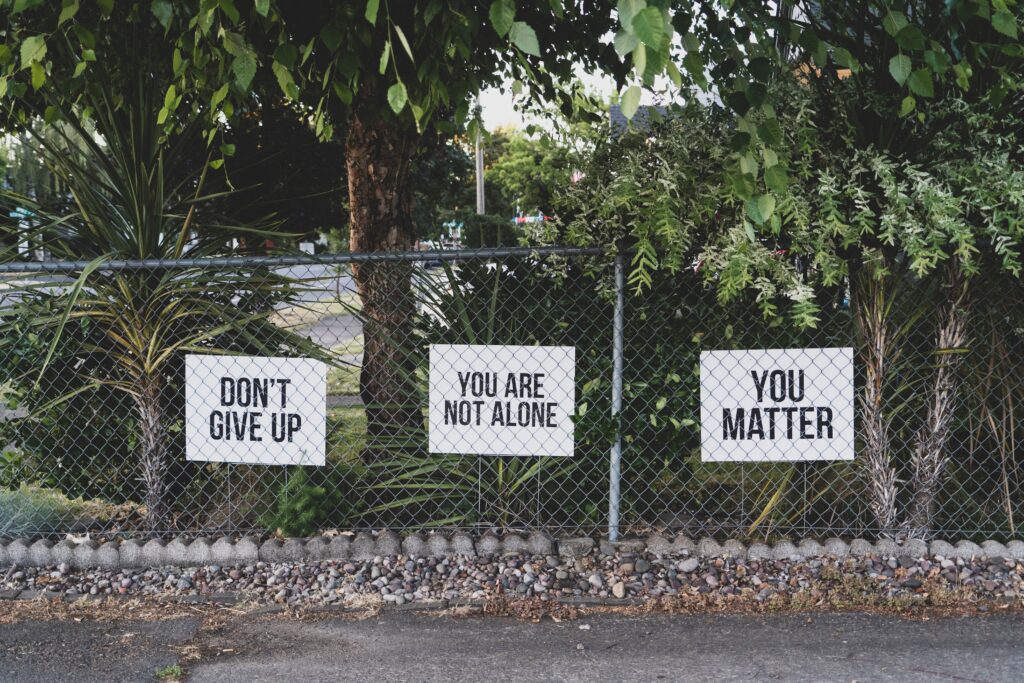In a world where being exposed to an enormous amount of information, having personal access to the lives of others, and living for the sake of others has become a norm, it’s easy to go through life neglecting the parts within us that need to heal from past traumas.
Fake is now our new type where being real has been turned into creating “reels”.
Are we getting lost in all of it? To the extent of losing our ability to look into our souls and feel something?
Depression, anxiety, loneliness, anger, guilt, hurt, and various others make up a ray of emotions that we have become too quick to block out with substance abuse, screen time, busyness, food, and anything else that can distract us.
By definition, triggers are very personal; it goes beyond something rubbing you off the wrong way. A trigger is a stimulus such as a smell, sound, or sight that triggers a memory or feeling, transporting the person back to the event of their original trauma.
– Portia Mazabane
People typically refer to this term when describing past traumatic experiences, where numerous negative emotions are aroused.
Developing healthier ways to give time and space to our difficult emotions is especially important right now to avoid or manage our triggers. But you may be questioning a) if you fit within the “distracted” group or not or b) if you are distracted and get easily triggered, how then do start to peel off the layers created to enable you to feel again?
The first step is to realize that you are not alone. We all have emotional triggers. It can be challenging to identify what precisely those triggers are, but the process of getting to know and understand them can help us heal and learn how to cope better in response.
Making changes from existing unhealthy behaviors to new and positive ones is never easy. But it all boils down to taking the first step in becoming aware of yourself to identify those triggers.
Some more common emotional triggers:
- Someone rejecting you.
- Someone leaving you (or the threat that they will).
- Helplessness over painful situations.
- Someone discounting, ignoring, or being too you.
- Someone blaming or shaming you.
- Someone being judgmental or critical of you.
- Someone coming on to you sexually in a needy way.
- Someone trying to control you.

Emotional triggers can produce physical effects on the body. They may resemble symptoms of anxiety disorders, which include:
- Increased heart rate
- Upset stomach
- Feeling dizzy or sick
- Trembling, shaking, or sweating
- Muscle tension
Luckily, there are ways you can cope. Both in the short term when you’ve been triggered and in a long time. Here’s a quick look at some coping strategies:
- Know what your go-to numbing behaviours are.
- Resist judging your feelings.
So often, we jump straight to our feelings about a feeling. Try to exercise self-compassion and sit with the feeling without explaining it away, piling another emotion on top of it, or telling yourself what it says about you as a person.
- Accept your feelings.
Your feelings are valid. It’s OK to feel angry, upset, or scared. The trick is to accept these feelings and not let them overtake you. You might not be in control of all your feelings, but you do have control of your actions. Remind yourself that feelings aren’t facts. When you don’t judge a feeling, you permit yourself to feel it
- Take a step back.
When you’re triggered, you lose your objectivity. It’s almost impossible to have any perspective when you’re overcome with emotion. If you can, take a step back from the situation to see things more clearly. Highly emotional thinking doesn’t produce clear solutions.
- Communicate.
Heightened emotions make it more challenging to communicate. But practical communication skills are the key to any good relationship. If a friend, colleague, or loved one has triggered you, take a moment to gather your thoughts. Communicate clearly what has happened so they can understand how you’re feeling.
- Breathing techniques.
You read earlier about how emotional triggers can produce physical symptoms of anxiety. Breathing techniques can help calm you down and stop things from getting worse.
As they’re dependent on individual experiences, emotional triggers will differ from person to person. Understanding your triggers — and how to deal with them — can help you cope long term.
“How many people are trapped in their everyday habits: part numb, part frightened, part indifferent? To have a better life, we must keep choosing how we’re living”
Einstein once reflected
Home Work:
Introducing The five A model.
| 5 As | Instruction |
| Ask | Use a simple question to collect and analyze information about your triggers |
| Advise | Identify the behavioral change required and journal it with a plan detailing how you could possibly make the change. |
| Agree | Determine the stage of change that you’re in |
| Assist | Acknowledge what assistance you need. This assistance needs to be appropriate to the stage you identified earlier |
| Arrange | Change your environment to assist you to overcome the triggers you have identified |
When we think about making changes, most of us don’t really consider all “sides” in a complete way. Instead, we often do what we think we “should” do, avoid doing things we don’t feel like doing, or just feel confused or overwhelmed and give up thinking about it at all.
Thinking through the pros and cons of both changing and not making a change is one way to help us make sure we have fully considered a possible change. This can help us to “hang on” to our plan in times of stress or temptation to be distracted from our triggers.


zoritoler imol
I’ve been exploring for a little bit for any high-quality articles or weblog posts in this sort of space . Exploring in Yahoo I at last stumbled upon this web site. Studying this info So i am glad to show that I’ve an incredibly excellent uncanny feeling I discovered exactly what I needed. I so much without a doubt will make certain to don’t forget this website and give it a glance regularly.